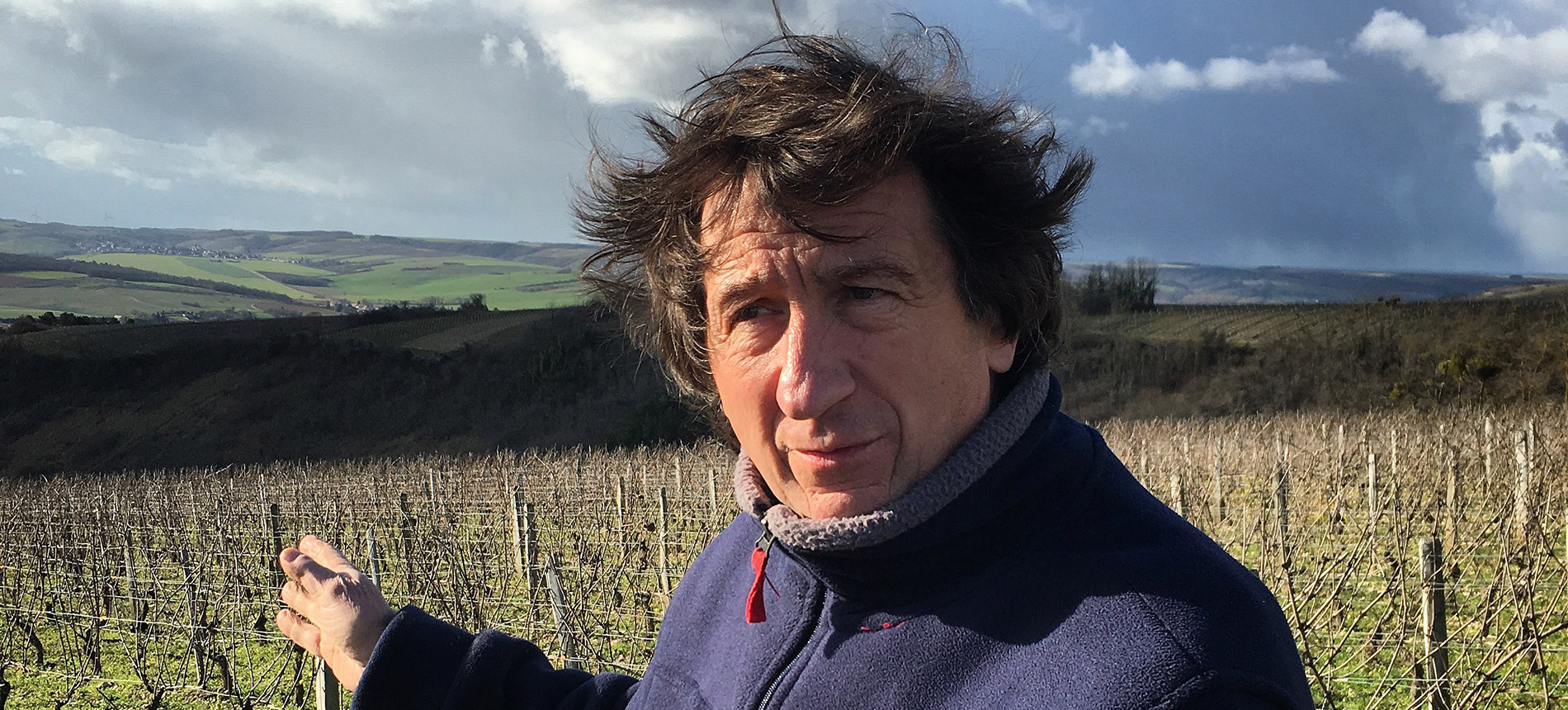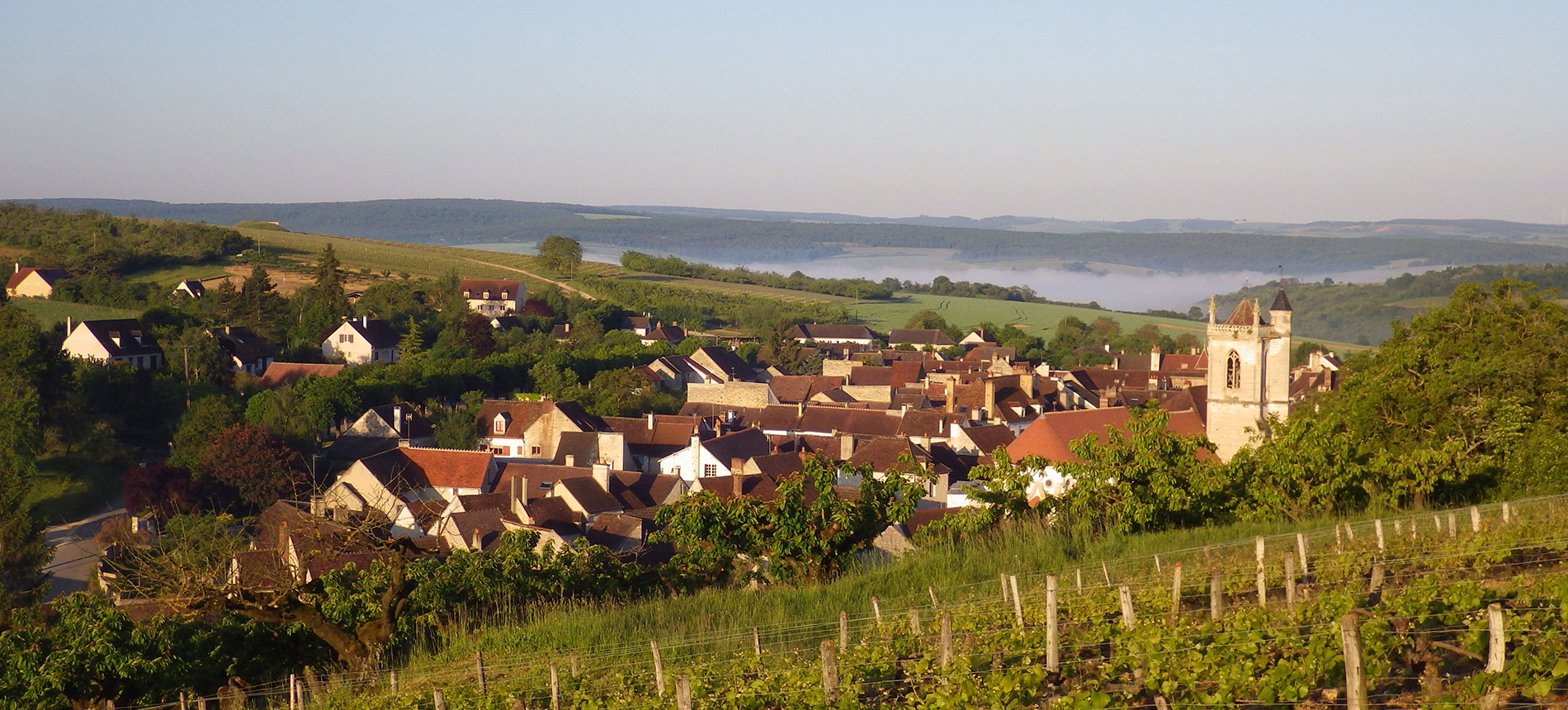The beautiful, storybook-like village of Irancy is located in the Yonne region of Northern France, just a few kilometers from Chablis. This old picturesque town sits in a valley surrounded by relatively steep vineyards which form a dramatic amphitheater around the village. Irancy represents a tiny island of red grapes – primarily Pinot Noir, but also an ancient varietal called César – which sits amongst a sea of white wine production, most notably Chablis itself, but also St Bris and Chitry, each with its own unique set of wines. The region is known for its limestone-laden soils, which impart a clear and fine underpinning of minerality in the wines, both red and white.
Walking around the tiny village of Irancy, Thierry Richoux seems to be like a de-facto Mayor. Everyone waves in deference and respect. This is helped by the fact that he looks a bit like the actor, Gerard Depardieu. He is sprightly with longish locks and an engaging smile, a youthful 60-something with lines on his face and rugged hands which let you know he spends a lot of time in the vineyards. Following in his farming footsteps are sons Gabin and Félix, who have joined Thierry in recent years and are steadily assuming sole responsibility and ownership of the domaine.
The Richoux family have been growing grapes and producing wine in the picturesque village of Irancy since 1610. Over the years, the family have accumulated a fairly sizable patchwork of vineyards in various sectors of the appellation, 20 hectares in total. Now in their 11th generation of producing wine, the Richoux family are true masters when it comes to vineyard work, so much so that, along with their own estate vineyards, they also farm the Irancy vines for Vincent Dauvissat. The Richoux's are also one of the only producers in the appellation who farm organically and biodynamically, a true challenge in this northerly and often inhospitable growing climate. They received their official Biodynamic certification as of the 2021 vintage.
The Richoux family are driven by an unwavering commitment to always respect both the unique terroir of Irancy as well as the particular qualities of each vintage. Their finest and best-exposed parcels are used to make the Irancy Rouge. In top years, he also makes two single-vineyard Irancy: one from the gradually sloping and clay centric "Cailles" vineyard, and the second from a vineyard called “Vaupessiot” with older vines and a full south-facing exposition overlooking the Yonne River. He rounds out his production with a delicious, refreshing Cremant de Bourgogne (think Chablis with bubbles!) from north-facing, high-altitude parcels.
At harvest, everything is picked by hand with careful sorting of all grapes in the vineyard and in the cellar. Richoux employs two sorting tables in order to remove any inadequate bunches. In the cellar, the grapes are de-stemmed 100%, and then fermented with indigenous yeasts in tank. Richoux also believes in a long élévage for his wines, so they spend their first year in tank, and then a full second year in large foudres. This helps to harmonize the wines while maintaining the purity and transparency of this unique terroir.
Compared with the white wines of the Yonne (especially Chablis), which have certainly etched their way into the hearts and minds of the American consumer, the red wines of this region remain paradoxically unknown. Like the red wines of Jura, the wines of Irancy have benefitted from improvements in modern viticulture as well as a warming climate. They are certainly ‘northerly’ in spirit, leading with minerals and earth rather than luscious fruit which itself plays a more supporting role in the background. The wines are lovely and fresh, but like a great Cru Beaujolais, they can also age amazingly well. On our first visit, Thierry served us a nearly 20 year old Irancy from his cellar, which while drinking beautifully, still had many years of life ahead of it!


